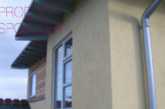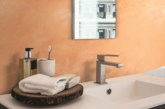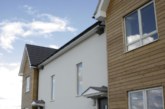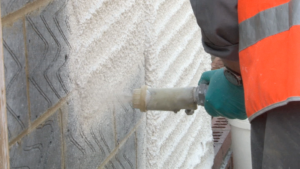
Janeeth Green, Insulation and External Category Manager at CCF, discusses how housebuilders can improve the longevity of external render.
There are many reasons why housebuilders choose to render a property. Cement rendering can act as a weathering barrier to keep the building dry and protected from wind and rain. Rendering is also actioned with aesthetics in-mind, and thanks to the array of render finishes, textures and colour options available, housebuilders can easily cover less attractive building materials, such as concrete blockwork, with the external render to ensure a property looks attractive for potential buyers. While render is a popular option for these reasons, keeping it looking good can be an issue without the right product, application and maintenance.
Cracking up
Traditional cement render is mixed on-site and can be a tedious process to apply as two to three coats are required, including a base coat and top coat. Because many layers are needed, with enough drying time necessary between each coat, it can be difficult to apply and may become uneven or lead to cracking over time. Whilst this is not only detrimental to the kerb appeal of the property, using many layers of render can also be expensive. Also, the period between coats, waiting for it to dry, adds more time to the project.
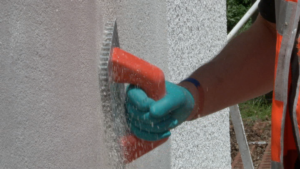
One of the main causes of cracking in render is that the individual layers are applied too thickly. Thick layers of render can trap moisture between the layers, leading to damp and cracked walls. Extreme fluctuations in temperature can escalate this process, as the moisture from the air can penetrate the structure and freeze in colder weather. When the ice thaws, gaps in the render can form.
It is impossible to know how long the process of a building and selling a new build will take, so housebuilders need to know that the render product chosen will last. Once the property is handed over to the occupant the issue of cracks appearing can cause complaints from the homeowner, this problem is particular acute in the first year of home ownership as it will usually fall to the property developer to pay for repairs under the home’s guarantee period.
Single layer
Many manufacturers of render products have moved away from the traditional cement mix for renders, and are instead developing single layer render mix. Using a pre-mixed, single layer render, such as the Weber Pral Monocouche Render, means the application is quick and efficient – saving time and money for builders as they don’t need to wait for individual layers to dry. This external render is available in 24 pre-made colours to suit the aesthetic needs of any building project, whilst remaining durable and easy to maintain as no further decorating is required to finish the exterior.
Innovations in render products are providing solutions to the very real problems of cracking, mould and general wear-and-tear that rendered buildings can face.
External render profile beads, to protect the edge of an exterior, must also be used to protect the external rendering. Commonly, brick mortar is used to secure the render bead, however brick mortar is not always strong enough for the intended application and can cause many problems.
In bad weather conditions and extreme cases, the render bead profile can detach from the structure altogether, damaging the exterior render. To avoid this, housebuilders can invest in a purpose-built bead adhesive to permanently fix the render bead to the wall. A specialised product, like Weberend bead adhesive, sets rapidly and secures the bead to the wall. This ensures that the risk of these beads falling from the wall is minimised, reducing the risk of damage.
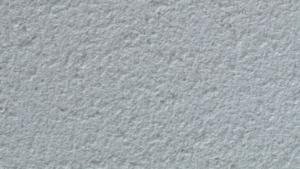
Protect the finish
As the render finish is constantly exposed to the elements, it goes without saying that over time render will deteriorate to a degree, especially in more extreme weather conditions. Further, render can be prone to issues with algae or lichen, and as a result ongoing maintenance will be required. To prevent issues occurring faster than they should, as a preventive measure, housebuilders can use products designed to stop algae growing on walls.
Weberend protect is a surface treatment that can be applied on top of the render. The protective layer can be applied immediately after the render has dried (moisture content should be ≤5% to a depth of 5mm) and will help resist water ingress, which encourages algae to grow. If used, this type of product keeps the render surface protected for many years after the initial application, to boost longevity and keep the building looking better, for longer.
Innovations in render products are providing solutions to the very real problems of cracking, mould and general wear-and-tear that rendered buildings can face. With the help of render product manufacturers, and trusted distributors who can advise on the most suitable product for the job, housebuilders can confidently keep the kerb appeal of rendered products alive
For further information on render products from CCF visit www.ccfltd.co.uk where you can also find your nearest branch.
Follow CCF on Twitter via @CCF_UK



